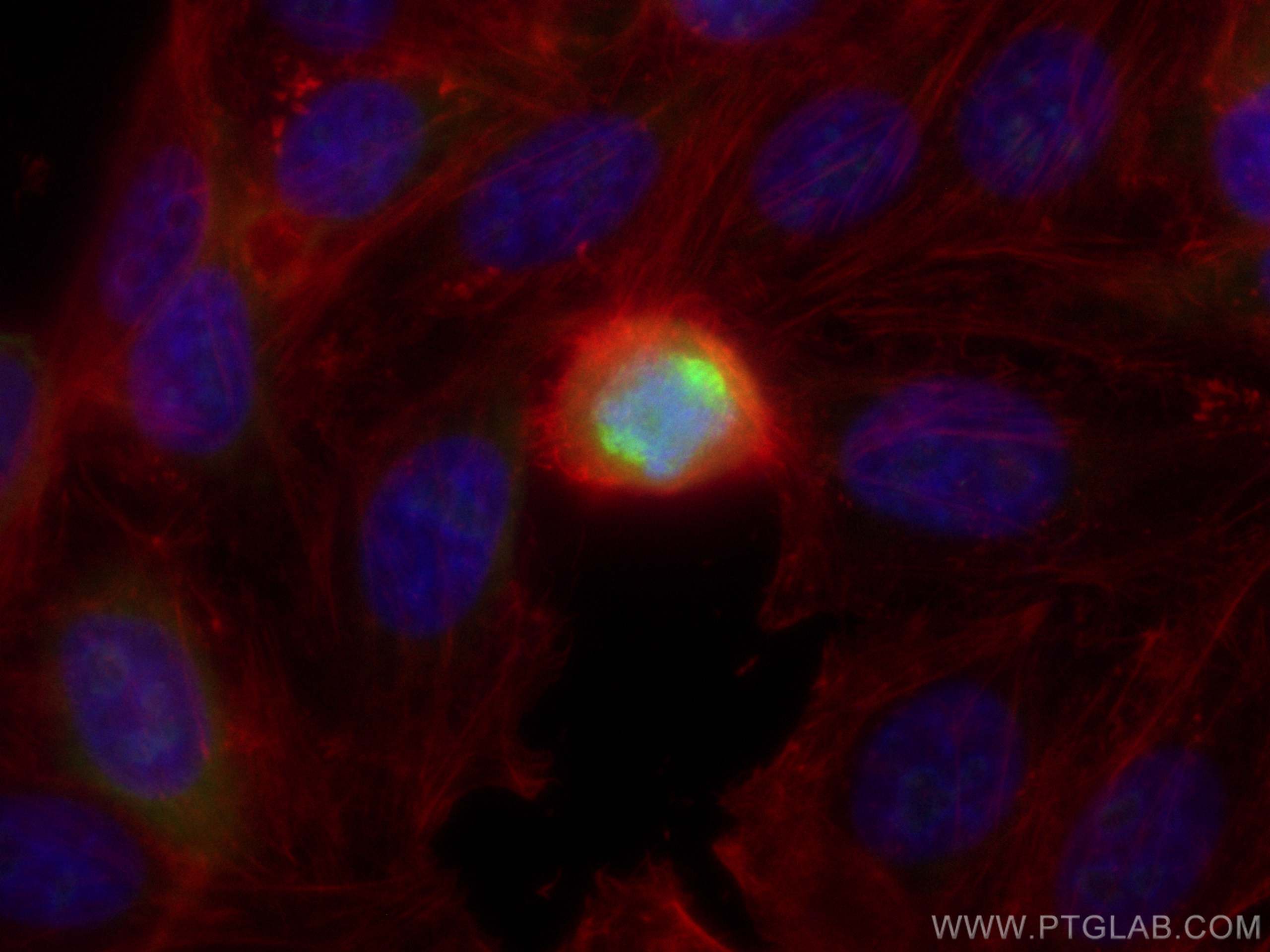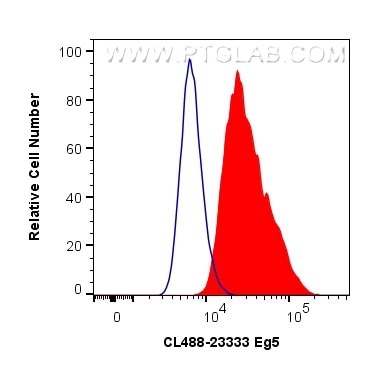Tested Applications
| Positive IF/ICC detected in | HepG2 cells |
| Positive FC (Intra) detected in | HeLa cells |
Recommended dilution
| Application | Dilution |
|---|---|
| Immunofluorescence (IF)/ICC | IF/ICC : 1:50-1:500 |
| Flow Cytometry (FC) (INTRA) | FC (INTRA) : 0.40 ug per 10^6 cells in a 100 µl suspension |
| It is recommended that this reagent should be titrated in each testing system to obtain optimal results. | |
| Sample-dependent, Check data in validation data gallery. | |
Product Information
CL488-23333 targets Eg5 in IF/ICC, FC (Intra) applications and shows reactivity with human samples.
| Tested Reactivity | human |
| Host / Isotype | Rabbit / IgG |
| Class | Polyclonal |
| Type | Antibody |
| Immunogen |
CatNo: Ag18695 Product name: Recombinant human KIF11 protein Source: e coli.-derived, PGEX-4T Tag: GST Domain: 707-1052 aa of BC136474 Sequence: LTEDLKTIKQTHSQELCKLMNLWTERFCALEEKCENIQKPLSSVQENIQQKSKDIVNKMTFHSQKFCADSDGFSQELRNFNQEGTKLVEESVKHSDKLNGNLEKISQETEQRCESLNTRTVYFSEQWVSSLNEREQELHNLLEVVSQCCEASSSDITEKSDGRKAAHEKQHNIFLDQMTIDEDKLIAQNLELNETIKIGLTKLNCFLEQDLKLDIPTGTTPQRKSYLYPSTLVRTEPREHLLDQLKRKQPELLMMLNCSENNKEETIPDVDVEEAVLGQYTEEPLSQEPSVDAGVDCSSIGGVPFFQHKKSHGKDKENRGINTLERSKVEETTEHLVTKSRLPLRA Predict reactive species |
| Full Name | kinesin family member 11 |
| Calculated Molecular Weight | 1056 aa, 119 kDa |
| Observed Molecular Weight | 120-130 kDa |
| GenBank Accession Number | BC136474 |
| Gene Symbol | Eg5 |
| Gene ID (NCBI) | 3832 |
| RRID | AB_3084073 |
| Conjugate | CoraLite® Plus 488 Fluorescent Dye |
| Excitation/Emission Maxima Wavelengths | 493 nm / 522 nm |
| Form | Liquid |
| Purification Method | Antigen affinity purification |
| UNIPROT ID | P52732 |
| Storage Buffer | PBS with 50% glycerol, 0.05% Proclin300, 0.5% BSA, pH 7.3. |
| Storage Conditions | Store at -20°C. Avoid exposure to light. Stable for one year after shipment. Aliquoting is unnecessary for -20oC storage. |
Background Information
Eg5 is a plus-end-directed microtubule motor encoded by KIF11 gene. It is an essential mitotic kinesin that plays a pivotal role in the formation and maintenance of bipolar spindle during early prometaphase. Eg5 has been implicated in tumourigenesis, and its overexpression has been found in various cancer tissues.
Protocols
| Product Specific Protocols | |
|---|---|
| FC protocol for CL Plus 488 Eg5 antibody CL488-23333 | Download protocol |
| IF protocol for CL Plus 488 Eg5 antibody CL488-23333 | Download protocol |
| Standard Protocols | |
|---|---|
| Click here to view our Standard Protocols |






